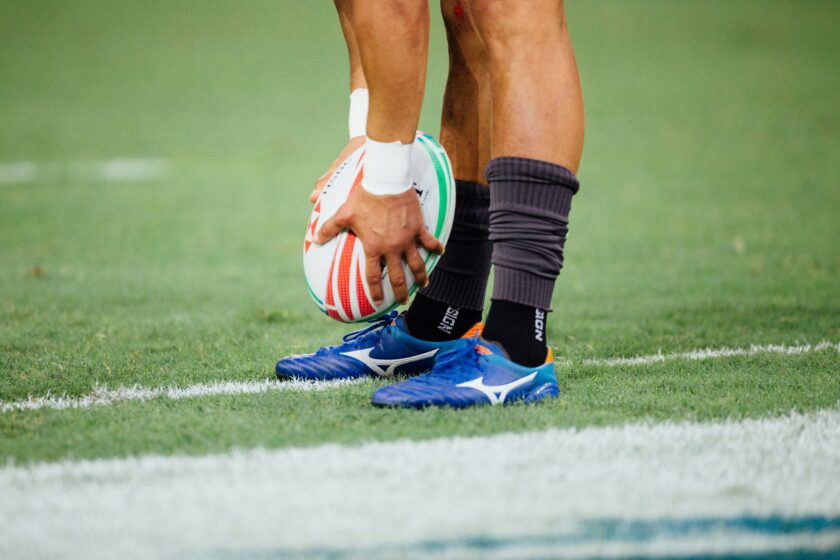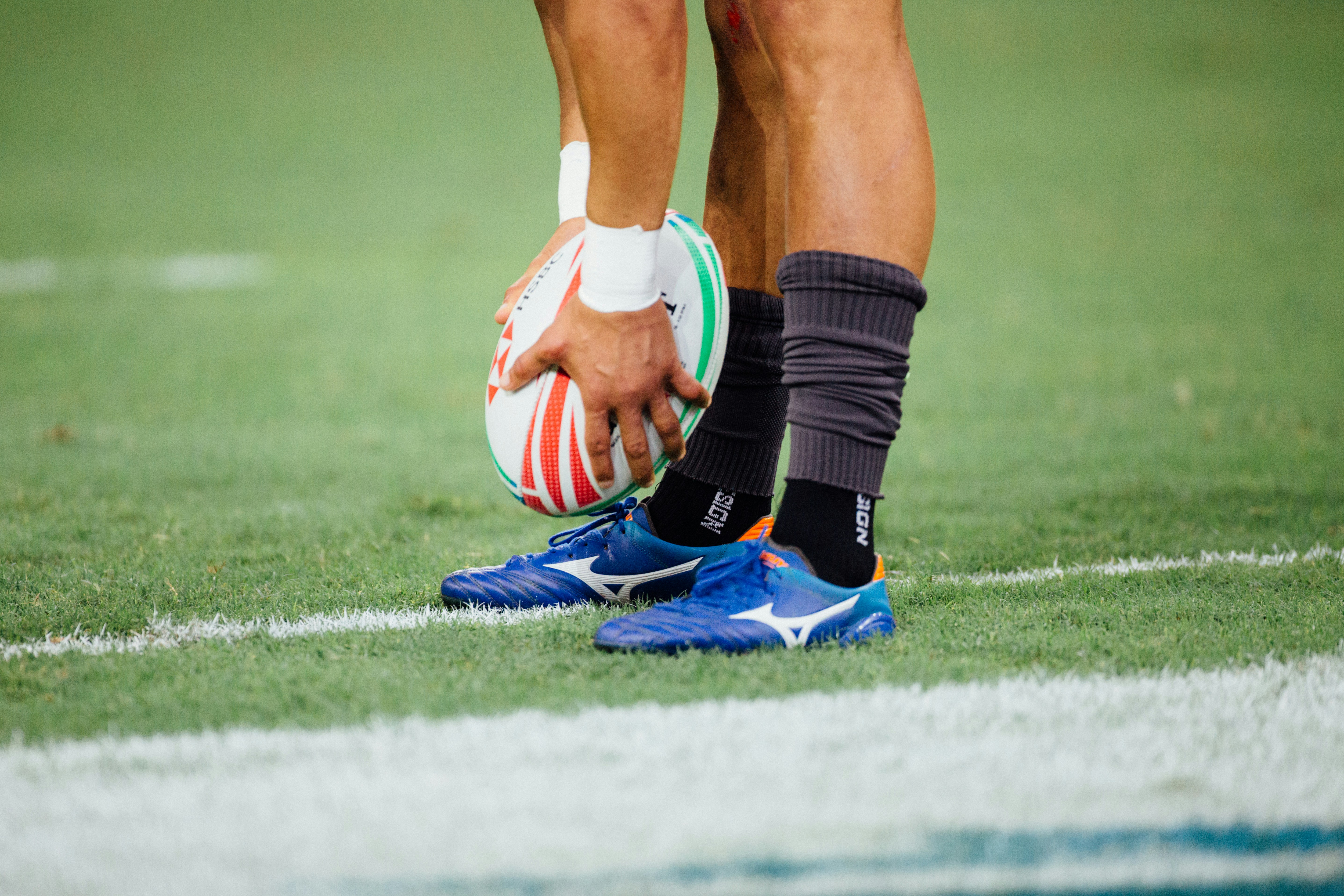When Football Meets Rugby: The Athletes Who Excelled at Both

While soccer and rugby might seem worlds apart, their shared roots and physical demands have allowed a handful of athletes to navigate both terrains with impressive agility. Though each sport has its distinct style—soccer being more finesse- and footwork-driven, and rugby relying heavily on physical contact and tactical spacing—the crossover between them is more common than most fans realize. Whether at the youth, amateur, or professional level, many athletes have made transitions between these two sports, proving that certain athletic traits, such as agility, spatial awareness, and competitive intensity, can translate fluidly across codes.
Just as players adapt across different sports, fans are also exploring new ways to engage with their favorite games—whether it’s placing bets on real matches or trying out casino games inspired by sports. Many online casinos offer both options, letting users bet on live sporting events and enjoy themed slots or virtual games based on football, basketball, and even motorsports. Platforms where you can use a virgin games promo code for exclusive perks are part of this trend, showing how versatility and opportunity extend beyond the field. This article takes a deep dive into the most notable examples of players who have successfully journeyed from one sport to the other.

From the Soccer Pitch to the Rugby Field
Danny Cipriani
Perhaps one of the most famous crossover athletes, Danny Cipriani initially played for Queens Park Rangers’ junior team and nearly joined Reading’s youth academy. However, his path veered toward rugby, where he carved out an impressive career with Wasps, Sale Sharks, and Melbourne Rebels. Even after committing to rugby, his skillset remained attractive to football clubs like Colorado Rapids and MK Dons, showing the lasting value of his soccer foundation.
Alex Lozowski
Another prominent rugby star with football beginnings, Lozowski spent his youth training with the academies of top-tier English clubs Arsenal and Chelsea. These early football experiences undoubtedly sharpened his ball control and decision-making abilities—traits that later proved invaluable as he played professional rugby for Leeds, Wasps, and Saracens.
Melissa Ruscoe
A standout dual-sport athlete, Ruscoe’s story is remarkable. She captained New Zealand’s national teams in both football and rugby. After a solid career in international women’s soccer, she shifted her focus to rugby, ultimately contributing to New Zealand’s victory in the 2006 Women’s Rugby World Cup. Her success in both disciplines is a testament to athletic versatility and leadership.
Wesley Fofana
Before becoming a French international rugby star, Fofana trained with the CFF Paris youth football team. Although he didn’t pursue soccer professionally, the technical foundation he built during those early years helped develop his agility and field vision—skills that became critical in his rugby performances for Clermont and France.
Kenny Logan
Logan, a former Scotland rugby international, once had football trials as a goalkeeper for Dundee United and Hearts. While his eventual fame came through rugby, his early training between the goalposts likely contributed to his spatial awareness and reflexes on the rugby field.
Owen Farrell
Currently the captain of the England rugby team, Owen Farrell also played football in his younger years. Though he ultimately chose rugby, his early exposure to the strategic and foot-focused nature of soccer helped shape his leadership and tactical understanding of game flow.
When Soccer Stars Dabbled in Rugby
Gareth Bale
Known globally for his blistering speed and powerful shots, Gareth Bale also has a background in rugby, having played it as a child in Wales. His time with the oval ball may have helped enhance his balance, agility, and strength—making him a more dynamic winger on the soccer pitch.
Alex Oxlade-Chamberlain
Another English footballer with rugby in his past, Oxlade-Chamberlain’s diverse sports upbringing contributed to his physical resilience and quick directional changes—attributes that serve him well as a midfielder.
Imagined Transitions: Roy Keane and Wayne Rooney
While neither Roy Keane nor Wayne Rooney ever played rugby at a serious level, fans and commentators have often mused about how their physical style of play, aggressive mentality, and tactical brilliance would have fit perfectly on a rugby team. Though purely speculative, this notion speaks to the overlapping characteristics valued in both sports.
Crossovers in the Female Game
Though rare in the men’s professional ranks, transitions from soccer to rugby are somewhat more common among female athletes.
Sophie Babo
A former member of the United States Youth National Team in soccer, Babo successfully transitioned to rugby and now plays for the Austin Valkyries in the Women’s D1 league. She credits her soccer experience for aiding her positional awareness and fitness in rugby.
Gabriella Dobias
After competing in university-level soccer at Concordia, Dobias found her calling in rugby. Her adaptability and all-around athleticism allowed her to switch sports smoothly, demonstrating how transferable soccer skills can be—especially at the amateur or semi-professional level.
Why This Crossover Happens
Countries like the United Kingdom and New Zealand encourage youth participation in multiple sports. It’s common for children to play both soccer and rugby until their mid-teens, at which point they specialize. This multi-sport background fosters balanced athletic development and reduces burnout.
Shared skills between soccer and rugby include:
- Agility and footwork: Crucial for evading tackles in rugby and maneuvering around defenders in soccer.
- Spatial awareness: Essential for positioning in both sports.
- Stamina and physical resilience: Needed to endure long matches and physical contact.
- Ball control and kicking accuracy: Particularly useful for fly-halves and fullbacks in rugby who often kick strategically.
The Reverse: From Rugby to Soccer?
Despite numerous examples of soccer players switching to rugby—especially at youth or amateur levels—the reverse is significantly less common. The primary reasons include:
- Different physical demands: Rugby players are typically bulkier and more impact-resistant, whereas elite soccer players benefit from lean builds and fluid movement.
- Specialized skills: Soccer’s footwork and ball control are highly technical and often refined over many years of focused training.
- Career paths: Rugby players who transition often do so between rugby league and union or into American football, where their size and strength are more applicable.
The intersection of soccer and rugby offers a compelling look at how athletic talent can adapt across sporting disciplines. Whether it’s a young player choosing between two promising paths or an elite athlete drawing from past experiences in a different sport, the lessons learned in one arena often enrich performance in the other.
From Cipriani and Ruscoe to Babo and Bale, these stories illustrate that while soccer and rugby may appear to belong to separate worlds, their shared core of strategy, athleticism, and passion brings them closer than we might expect.
Spotted something? Got a story? Send a Facebook Message | A direct message on Twitter | Email: [email protected] Latest News









